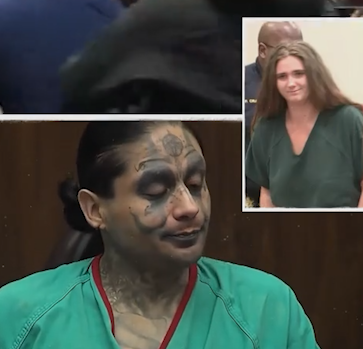A Courtroom Tragedy: Justice, Vengeance, or Something Else?
A routine court hearing devolved into a scene of shocking violence, leaving the legal community and the nation reeling. The details are horrifying, the questions numerous, and the answers far from clear.
A Mother’s Desperate Act
In a case already brimming with intense emotion and public outrage, a mother, whose identity remains protected to preserve her daughter’s privacy, allegedly opened fire in the courtroom, killing the man accused of sexually assaulting her child. Eyewitness accounts paint a stark picture: the sudden rise, the brandished weapon, the shots fired. Court officers swiftly intervened, subduing the woman as paramedics rushed to the scene. The accused was pronounced dead.

Breached Security and Unanswered Questions
This dramatic event has ignited fervent debate. How did a firearm bypass the supposedly rigorous security protocols of the courthouse? Was this a desperate act of grief-fueled rage, or a premeditated act of vengeance carefully planned before the trial even began? These are the critical questions now facing law enforcement. The mother is currently in custody, facing charges of homicide and illegal firearm possession, and a full investigation into the security breach is underway.

A Nation Divided: Compassion vs. Condemnation
The aftermath of this tragedy has exposed a deep chasm in public opinion. Some empathize with the mother, viewing her actions as a tragic consequence of unbearable pain and a broken justice system that failed to protect her daughter. Others condemn her actions as a reckless violation of the legal process, a blatant disregard for the rule of law, and a dangerous precedent. The nation struggles to reconcile its conflicting emotions: compassion for a grieving mother with the unwavering principle of justice through the courts.

Life Without Parole for Children: A Broken System?
Beyond the immediate tragedy of the courtroom shooting, this incident raises a broader conversation about the US justice system and its treatment of young offenders. The jarring juxtaposition of the mother’s actions with the ongoing debate surrounding juvenile life without parole (JLWOP) sentences highlights a deeper, systemic problem.
Lionel Tate: A Symbol of Systemic Failure

The case of Lionel Tate, sentenced to life without parole at the age of 12 for a tragic accident during a wrestling game, stands as a powerful illustration of this problem. His sentence, overturned years later after intense legal battles, became a symbol of the injustices within the juvenile justice system. It serves as a stark reminder that children, still in the process of developing both cognitively and emotionally, are not always capable of understanding the long-term implications of their actions.
The Human Cost of JLWOP

At least 79 children under 14 are currently serving life without parole sentences in the United States. These are not hardened criminals; these are children who, in many cases, have experienced significant trauma, poverty, and neglect. Their life sentences represent not just a failure of justice but a failure of compassion. This failure affects them and the entire community.
A Violation of Human Rights

Human rights organizations like Human Rights Watch and the Equal Justice Initiative have consistently criticized JLWOP, arguing that it violates children’s fundamental rights to rehabilitation and a second chance. The sentencing of children to die in prison is viewed as a violation of human dignity, ignoring the scientific understanding of childhood brain development and its capacity for change.
Racial Disparities and Systemic Inequality

The disproportionate number of minority children serving JLWOP sentences underscores the deep-seated racial inequalities within the criminal justice system. African American and Latino children are significantly overrepresented, highlighting the bias and systemic issues that need to be addressed. The system often fails to adequately consider the social and economic contexts in which these children grew up.
A Plea for Change and Redemption

Advocates for reform, including Bryan Stevenson, founder of the Equal Justice Initiative, strongly believe that children deserve a second chance, and that childhood should not be a death sentence. The story of a young girl, whose plea for redemption highlighted the potential for growth and change in even the most troubled youth, underscores the need for reform. Her words echoed the need to consider the developmental stage of young offenders when determining punishment. The call for trauma-informed care, periodic sentence reviews, and rehabilitation is central to their arguments.
Redefining Justice

The debate over juvenile life sentences boils down to a fundamental question of values. Do we, as a society, believe in redemption and second chances? Do we acknowledge the capacity for growth and change in children? Or do we continue to condemn them for actions committed during a crucial period of development, denying them the possibility of rehabilitation and reintegration into society?
Conclusion: The Urgency of Reform
The stories of Lionel Tate, the young girl’s plea, and the countless others serving JLWOP highlight the urgent need for reform in the American justice system. These children deserve the opportunity to prove that they can change, to heal, and to become contributing members of society. Their fate should not be a life sentence of regret for mistakes made as children; rather, it should reflect the possibility of redemption and a second chance. A just society measures its progress by how it treats its most vulnerable members.


